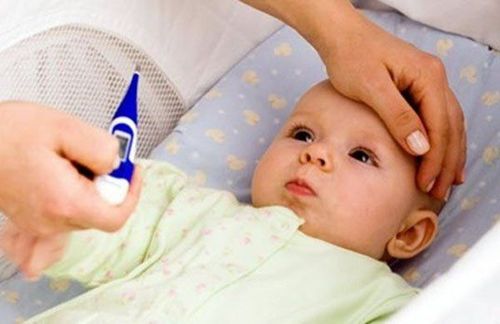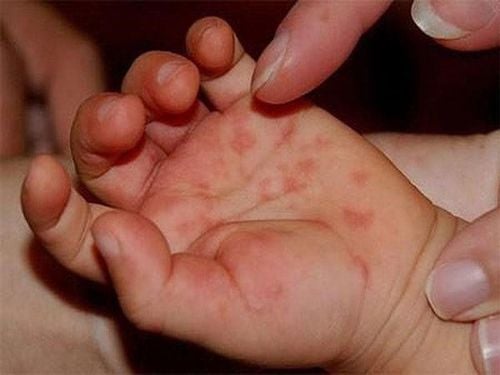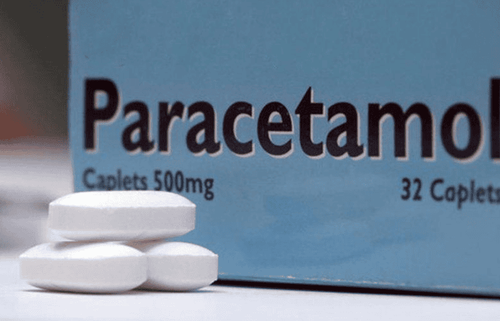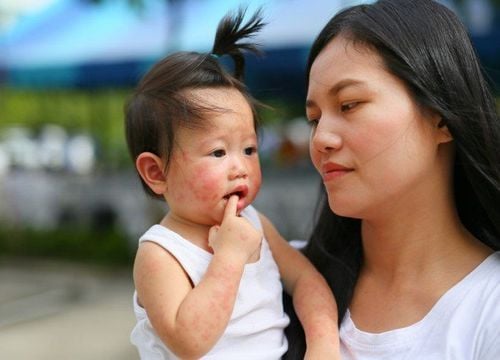This is an automatically translated article.
1. Causes of hand, foot and mouth disease
Hand, foot and mouth disease is a common infectious disease in young children. Characteristic manifestations of the disease are high fever, the appearance of sores in the oral cavity, a rash with blisters on the hands, feet and sometimes even the buttocks.
Enterovirus viruses are the cause of hand, foot and mouth disease in children and infants. Specifically, hand, foot and mouth disease is mainly caused by the coxsackievirus A16 virus strain (which is a case of few complications and usually resolves on its own). However, patients can also have another virus strain, enterovirus 71 (EV71), which can cause many dangerous complications, even death.
2. How do babies get hand, foot and mouth disease?
Usually, newborns get hand, foot and mouth disease mainly due to viral infections that are spread from person to person through direct contact with secretions from the nose and throat, saliva, and virus-containing fluids. from blisters or from the feces of other pediatric patients. The greatest risk of transmission occurs during the first week after infection, but the infectious period can last several weeks (because the virus is localized in the stool).
In fact, children can be infected with HFMD more than once. The reason is that each time the child is infected, the child's body only produces antibodies to a certain virus, and there is a risk that the child can get the disease again if infected with another virus of the enterovirus group.
3. How long does hand, foot and mouth symptoms begin to appear after infection?

Trẻ bị sốt, mệt mỏi là dấu hiệu nhận biết sớm nhất của bệnh
Children with hand, foot and mouth disease will show the following symptoms:
In 3-7 days after infection, the child has almost no symptoms. This is called the incubation period (from infection with the virus to the onset of symptoms); Fever is the most common first symptom of hand, foot and mouth disease, lasting for 24 to 48 hours. In addition, pediatric patients may have poor appetite, irritability and sore throat; After a fever is the time when painful sores appear in the oral cavity, initially mainly red blisters, then often develop into ulcers. The location of these sores is concentrated on the tongue, gums and inside the cheeks; Skin symptoms: Non-itchy rash, appearing in 1-2 days. The telltale signs are red, flat or raised lesions, in some cases accompanied by blisters. Skin rash usually localized to the palms or soles, in some cases may appear on the buttocks and genitals; Some pediatric patients may have no symptoms or only mild rashes and mouth ulcers.
4. Prevention of hand, foot and mouth disease for babies

Tắm sạch sẽ cho trẻ
Currently, there are no antiviral drugs as well as specific vaccines to prevent enteroviruses - the causative agent of hand, foot and mouth disease. The measure to reduce the risk of infection is to clean the child and get medical intervention promptly when the child shows serious symptoms.
When sick, it is necessary to rehydrate the child, medicine can be used to treat symptoms such as fever or pain caused by sores.
Vinmec International General Hospital is one of the hospitals that not only ensures professional quality with a team of leading medical doctors, modern equipment and technology, but also stands out for its examination and consultation services. comprehensive and professional medical consultation and treatment; civilized, polite, safe and sterile medical space
Please dial HOTLINE for more information or register for an appointment HERE. Download MyVinmec app to make appointments faster and to manage your bookings easily.





![[Vinmec - Q&A with experts] Number 02: Children's health in hot season (Part 1)](/static/uploads/small_20190723_082829_863235_Banner_FB_1200x628_max_1800x1800_png_982bf67b1c.png)







